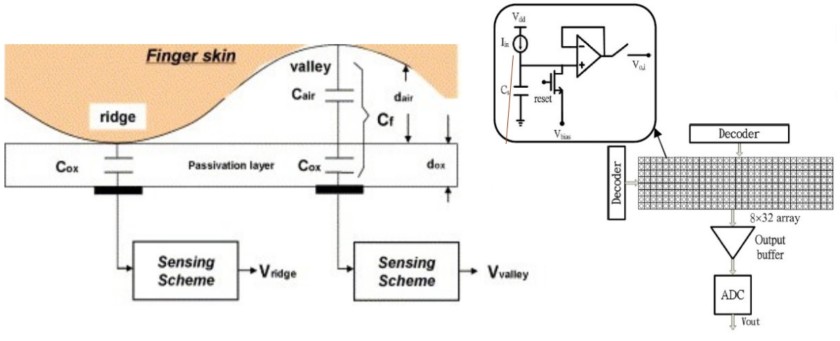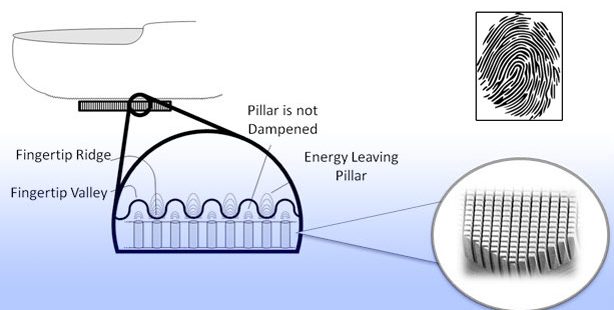The smartphone market in the world is saturated and the exchange time is prolonged. Various mobile phone manufacturers hope to use innovative technology to drive the current buying. It is said that the innovative highlights of smartphones in 2019 can attract consumers’ attention and fingerprint recognition under the screen. According to some reports just like Huawei, Xiaomi and OPPO, Samsung will also launch a smartphone with a fingerprint recognition solution under the screen, soon. With the large-scale introduction of fingerprint technology under the screen of major Android mobile phone brands, continue to increase the penetration rate of fingerprint recognition on smartphones. It is estimated that the fingerprint recognition technology in the mobile phone fingerprint recognition market will increase from 3% in 2018 to 13% in 2019.
Looking forward, further breakthroughs in market penetration for greater business opportunities in the future, the current fingerprint recognition applications on the market screen can be divided into three types of systems: Capacitive fingerprint recognition under the traditional screen, ultrasonic fingerprint recognition under the screen, and optical fingerprint recognition under the screen… What are the advantages and disadvantages of each, and what are the applications and development trends in the future?
Capacitive fingerprint recognition mature and low-cost but tricky

Capacitive fingerprint recognition under traditional screens is not unfamiliar to many consumers. At present, in addition to fingerprint recognition under the screen, other types of commercial fingerprint recognition technologies utilize capacitive fingerprint recognition technology. As far as technology is concerned, the cost is lower, but if you want to transfer capacitive fingerprint recognition to the screen, there is indeed no difficulty, especially the weak penetration is its limitation.
Traditional capacitive fingerprint recognition has to be moved to the screen. The most important solution is to replace the traditional stencil-based fingerprint sensor with a transparent glass-based sensor and directly embed it into the LCD panel but also need to reduce the thickness of LCD panel; improves the problem of poor penetration. This allows the fingerprint sensor to sense the signal and complete the fingerprint recognition when the finger touches the screen.
Although the fingerprint is recognized under the traditional capacitive screen, the screen does not need to emit light during the process. It can support LCD screens, making the application cost relatively low. However, because the smartphone screen has a touch panel, the touch panel signal and the fingerprint identification signal may interfere with each other. This problem still needs to be solved.
Ultrasonic fingerprint recognition
Lately, Qualcomm, the mobile processor manufacturer, presented its first chip supporting the on-screen ultrasonic fingerprint recognition system. It can be said that it is the beginning of the century for ultrasonic fingerprint recognition under the screen. Samsung’s high-end smartphones will be launched with Qualcomm’s on-screen fingerprint recognition system, and other mobile phone brands are expected to be deployed the same to high-end phones.
For now, on-screen ultrasonic fingerprint recognition technology is the most advanced technology. The recognition process is to transmit a supersonic wave to the surface of the finger through the sensor; when the finger touches the screen of the smartphone, it constructs a 3D image by using the difference between the skin of the fingerprint surface and the density of the air. After the sensor receives the ultrasonic echo message, the information is compared with the information stored in the mobile phone to achieve the purpose of identifying the fingerprint.
Due to the advantages of ultrasonic fingerprint recognition under the screen, it has strong penetrability and high anti-fouling ability. Even if wet fingers and dirty fingers use on smartphones, they can be perfectly recognized. Thanks to the excellent penetration of ultrasound, it also supports other living tests. Through the on-screen ultrasonic fingerprint recognition, 3D fingerprint recognition images can be obtained, and the security is higher than other screen fingerprint recognition technologies. However, due to technical complexity, the cost is also the highest in this fingerprint recognition solution under the screen. In the future, perhaps through mass production promotion, the can be reduced.
Optical fingerprint recognition limited to OLED screens
Optical fingerprint recognition under the screen is the most common solution for everyone. Not only smartphone applications, including building fingerprint identification systems, corporate attendance fingerprint identification systems, etc., are optical fingerprinting. The main principle relies on the sensor to project light and then obtains the light reflection to draw a fingerprint pattern, which is compared with the system memory fingerprint image to achieve the recognition function.
However, the on-screen optical fingerprint recognition system used by smartphones is limited by the size of the mobile phone. The light from the screen of the mobile phone is used as the light source. At the same time, the LCD screen itself cannot be illuminated, so the products that support optical fingerprint recognition under the screen are all OLED screens. Smartphones with OLED screens have a natural interval between pixels to ensure light transmission. When the user touches the screen, the OLED screen emits light to illuminate the finger area, and the reflected light passes through the pixel gap of the screen, returns to the sensor under the screen, and the formed image is compared with the data stored in the database…
The advantage of optical fingerprint recognition under the screen is that it can avoid the interference of ambient light to the greatest extent, and even better in extreme environments. However, optical fingerprint recognition under the screen also faces the problem of the dry finger recognition rate. In addition, due to the illumination of a specific area of the screen, it is inevitable that some parts of the screen will be ageing, and the power consumption of the optical fingerprint recognition under the screen is much higher than that of the conventional optical fingerprint, which needs to be solved.
source: technews



Related Posts
What is a juice-jacking attack? How can we be safe from such attacks?
Getting the right dashcam for your needs. All that you need to know
WhatsApp iPad App Gets Major Overhaul, Adds New Communities Feature
Moto G85 5G launched in India but is unlikely to beat VIVO or XIAOMI
Rise of deepfake technology. How is it impacting society?
Smartphone Apps Get Smarter- Meta AI’s Integration Across Popular Platforms